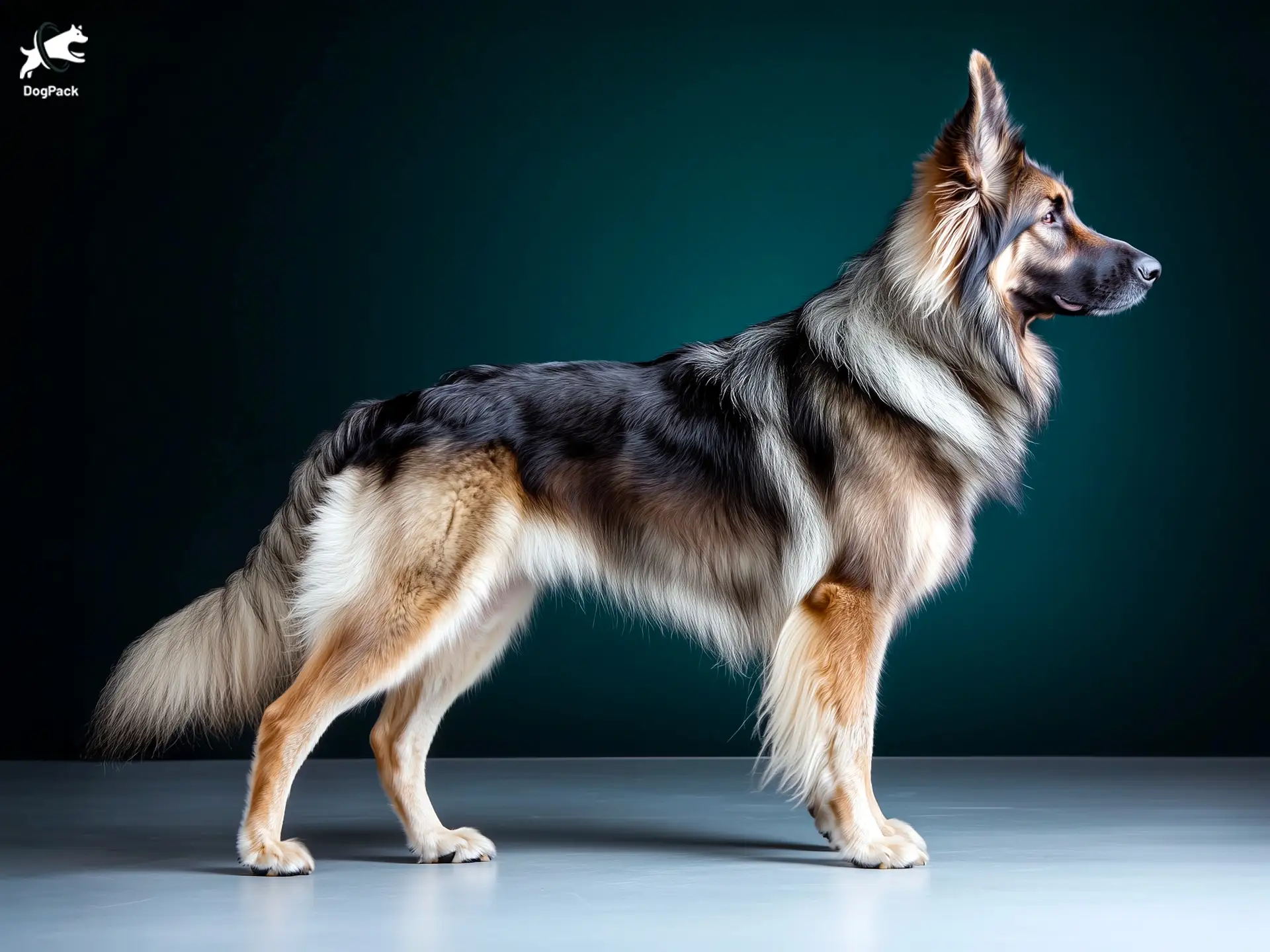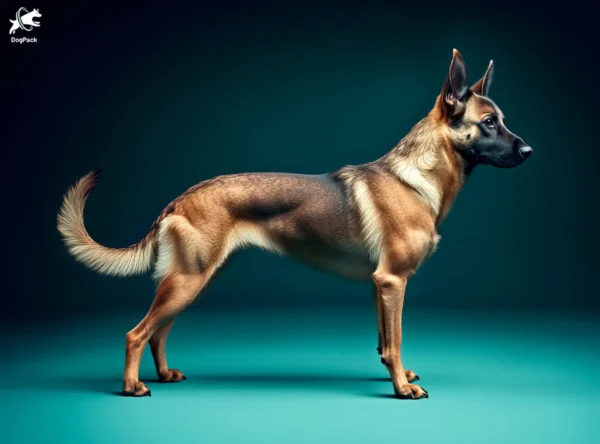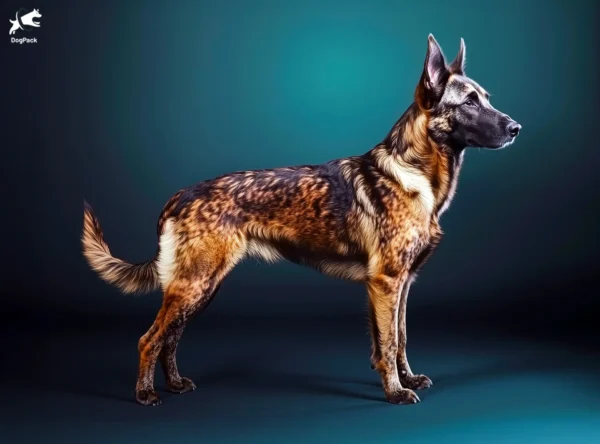Old German Shepherd Dog Breed Info & Overview
These striking canines are a lesser-known offshoot of the classic German Shepherd, celebrated for their lush coats and calm, steady nature. Renowned for keen intelligence and unwavering loyalty, they excel at herding, guarding, or simply being a loving family companion. With a history deeply rooted in rustic German farms, they bring an air of heritage that sets them apart.
Characteristics
Pictures
Breed History
Origins of these faithful herders trace back to rural regions of Germany, where dedicated shepherds required dependable dogs capable of handling tough jobs. Focusing on robust genetics and working ability, they selectively bred canines with longer, fuller coats. This gave rise to the forerunners of what enthusiasts today call the Old German Shepherd Dog, a lineage prized for agility, endurance, and sharp instincts.
During the late 19th and early 20th centuries, German farmers favored these dogs for herding flocks across rugged terrain. Unlike standardized German Shepherds, this older strain maintained varied coat lengths and slightly different temperaments, reflecting the region-specific needs of pastoral life. Handlers valued their adaptability, from protecting livestock to patrolling homesteads, and they were often passed down through generations of farming families.
Although not officially recognized by some major kennel clubs, these dogs remain cherished by enthusiasts who treasure the breed’s authentic working heritage. Organizations in Germany have preserved its distinct traits, ensuring robust health and strong character. Over time, devoted fans spread awareness of this rare variety, preserving cultural legacy while inspiring a new generation to appreciate the breed’s rich history and versatile abilities.
Temperament, Personality
These dogs carry themselves with a confident, grounded demeanor. They’re famously protective, forming deep bonds with their human families and staying watchful around the home. Their calm yet vigilant nature means they’ll be the first to alert you if a squirrel crosses the yard. Early socialization is key, guiding them to distinguish friendly faces from potential threats without losing that loyal guardian spark.
With children, they’re often patient and steadfast, stepping in like gentle babysitters when needed. Their herding instincts can surface in playful nips or nudges, but consistent training teaches them to channel that energy constructively. Other pets typically coexist well, too, provided introductions are done carefully. Though they may appear aloof around strangers, their trust can be earned with a kind approach and a little time.
The Old German Shepherd Dog thrives in an environment that values companionship. Leaving them alone for extended periods can lead to restlessness or destructive behaviors. Their unwavering devotion makes them a true best friend, whether you’re adventuring through the countryside or unwinding at home. Balanced social experiences and consistent boundaries help shape their spirited personality into a well-mannered, reliable family member.
Physical Characteristics
Bred for rugged terrain, these dogs boast a sturdy frame and robust musculature. Their thick double coat is one of the most noticeable features, offering ample protection from harsh weather. While they share similarities with standard German Shepherds, expect a lusher, often longer coat, which can come in a range of colors, including sable, black-and-tan, or even bicolor patterns that highlight their majestic presence.
Their heads are slightly broader than some shepherd types, giving them an imposing yet approachable aura. Pointed ears that stand tall contribute to the breed’s iconic silhouette, always alert to surrounding sights and sounds. You’ll also notice a gracefully curved tail, typically held low when relaxed. These subtle differences underscore their distinct lineage, merging practicality with a hint of old-world elegance.
Overall size ranges from moderately large to undeniably big, but what consistently stands out is their confident posture. Their motions exude a balanced combination of power and agility, thanks to a well-angled hindquarter and strong forequarters. Whether trotting alongside a hiker in the woods or patrolling a farmstead, their physical attributes reflect centuries of selective breeding focused on endurance, stability, and a keen protective edge.
Health Issues
Like their more common German Shepherd cousins, these dogs can experience hip and elbow dysplasia. Regular veterinary check-ups and monitoring for subtle gait changes are crucial for early detection. Ensuring they maintain a healthy weight reduces stress on joints, which may help stave off mobility challenges. Consistent exercise also supports stronger muscles that can better stabilize the hips and elbows over time.
Degenerative myelopathy occasionally appears in older dogs of this lineage, leading to hind-limb weakness. While there’s no definitive cure, early diagnosis and supportive care can prolong mobility and comfort. Some owners explore physical therapy, hydrotherapy, or alternative treatments for relief. Additionally, routine screenings for eye health and heart function can catch any emerging concerns before they become serious quality-of-life issues.
Preventative measures like genetic testing and responsible breeding practices further reduce the risk of hereditary conditions. Reputable breeders often provide health clearances or documentation verifying their dogs’ hips, elbows, and other essentials. Ultimately, vigilance is key: Regular check-ups, balanced diets, and thoughtful exercise regimens keep the Old German Shepherd Dog in top form, letting them enjoy an active life as your steadfast companion.
Grooming Needs
That luxurious double coat is more than just for show—expect substantial shedding, especially during seasonal “blowouts.” A thorough brush-out a few times a week helps keep tangles at bay and removes loose undercoat. It’s wise to invest in a high-quality de-shedding tool, as neglecting regular grooming can lead to mats, which make a cozy home for dirt or allergens.
Baths needn’t be frequent, unless your dog finds a mud puddle irresistible. A gentle shampoo formulated for heavy-coated breeds works best, and be sure to rinse thoroughly to prevent residue buildup. While grooming, check ears for wax and debris, and trim nails if you hear them clicking on the floor. These small steps help keep the coat and skin healthy all year round.
Be prepared for a bit of fur everywhere—your sofa, carpets, and maybe even your coffee cup if you’re not careful. Still, many fans of this breed love their “fur confetti” as part of the package. Regular sessions with a brush, combined with an occasional professional groom, will keep your Old German Shepherd Dog looking magnificent and feeling comfortable, whether they’re romping outside or lounging on the couch.
Exercise Requirements
Born to work, these dogs have high energy that demands a good daily outlet. A brisk walk around the block probably won’t cut it—aim for at least an hour or two of purposeful activity. Incorporate tasks like carrying a backpack on hikes or playing structured games like fetch or frisbee. Engaging their problem-solving skills, such as through agility courses, also helps keep them mentally satisfied.
Off-leash runs in safe, open areas are ideal, but ensure a reliable recall first. They’re quick to explore and may be tempted to chase wildlife if not properly supervised. Many owners find that advanced obedience or sports like Schutzhund tap into the breed’s working drive, keeping boredom at bay. Consistent, varied exercises help maintain peak physical condition and a happy, stable temperament.
If they don’t get enough exercise, pent-up energy can manifest in chewing, digging, or general mischief. Use interactive toys to challenge them when you’re busy, and rotate these toys to keep things interesting. While they thrive in homes with yards, frequent outings can suit apartment dwellers who are committed to daily adventures. Most importantly, exercise sessions create bonding moments that deepen your relationship.
Training Tips
Start training early and focus on consistency. These clever canines read humans well, so a firm yet compassionate approach works wonders. Positive reinforcement—treats, praise, or a fun round of tug—motivates them to master new commands. Their natural protector instincts can become overzealous if not channeled properly, making it vital to encourage calm, polite interactions from puppyhood onward.
Socialization isn’t just about meeting lots of people; it’s about introducing varied experiences, sights, and sounds. Bring them to bustling parks, quiet trails, and anywhere in between. Introduce them to different dog breeds, too, such as small dog breeds or medium dog breeds. This broad exposure helps them adapt gracefully, ensuring they remain confident in unfamiliar settings.
For more advanced obedience work, many owners turn to group classes, where the presence of distractions hones a dog’s focus. Reward-based methods typically outshine harsher techniques, preserving trust while building reliable behaviors. Keep sessions short, sweet, and regular to avoid boredom. With patience, these bright learners can excel at everything from standard commands to specialized tasks—especially when they sense your genuine enthusiasm.
Nutrition, Diet
Because they’re so active, Old German Shepherd Dogs typically need high-quality, protein-rich meals that support muscle health and sustained energy. Adult dogs often do well with around 3 to 4 cups of nutrient-dense kibble daily, divided into two servings. Choosing formulas designed for large, working breeds helps ensure they get the right balance of protein, fats, and essential vitamins.
Some owners rotate in raw or freeze-dried options to diversify nutrients, but consultation with a veterinarian or canine nutritionist is key before making major dietary changes. Pay attention to calorie intake, as overfeeding can lead to joint stress or obesity. Adjust portions according to activity level—if your dog’s ribs become hard to feel, consider scaling back slightly or increasing exercise.
Treats are a powerful training ally, but moderation is crucial. Using low-calorie options or even small bits of lean meat can maintain motivation without piling on unwanted weight. Keep fresh water available at all times, especially after intense play or work sessions. Observing your dog’s coat condition, stool quality, and overall vigor can guide tweaks to their meal plan over time.
Adoption, Breeders
If you’re looking for this specific variety, research breeders who specialize in Old German Shepherd Dogs. Reputable breeders will prioritize health testing for conditions like hip dysplasia. Don’t hesitate to ask for clearances or speak to past puppy buyers. This ensures you’re supporting ethical breeding practices that maintain the breed’s strong temperament and robust constitution.
Breed-specific clubs or forums can be goldmines for finding recommended breeders. Sites like Altdeutscher-Schaeferhund.org often list trusted contacts or provide historical information. Some rescue organizations also focus on shepherd varieties, giving older dogs a second chance.
When adopting, meeting the dog in person is invaluable. Observe their behavior around strangers and whether they seem relaxed or anxious in new environments. If dealing with a breeder, a visit can reveal how pups are socialized and housed. Armed with thorough research, patience, and persistence, you’ll greatly increase the odds of bringing home a well-adjusted canine partner who matches your lifestyle.
Family Pet?
Busy households often find these dogs to be a fun and reliable presence. They’re large enough to handle rowdy play with older kids, yet gentle when interactions are appropriately supervised. Their watchful instincts mean you’ll have a built-in guardian who takes family safety seriously. Just keep in mind that young children need guidance when playing with a strong, active dog.
Socializing them around family members of all ages—plus any resident pets—ensures a harmonious dynamic. They’ll likely thrive in an environment where someone is usually home, or at least able to check in throughout the day. If you have a multi-pet household, early introductions help prevent tension. With proper direction, they’ll often form close bonds and become protective without being overbearing.
While they can adapt to smaller living spaces, a fenced yard or regular outdoor excursions make life easier for everyone. In many families, the Old German Shepherd Dog ends up being a best friend to each member, from playful kids to active adults seeking a versatile companion. Give them a place in your daily routines, and you’ll likely see loyalty that spans their entire lifespan.
Right For You?
Consider your activity level. This breed’s working heritage requires consistent mental and physical challenges. If your idea of exercise is an occasional stroll, you might find a large, high-energy dog more demanding than anticipated. Homebodies with limited time could struggle, but devoted owners who enjoy hiking, training, or outdoor sports will appreciate having such a motivated partner by their side.
Next, think about grooming tolerance. Twice-weekly brushing is mandatory, plus deeper sessions during shedding seasons. If you don’t mind a bit of fur on the furniture, you’ll be fine. Additionally, their size and protective instincts mean they need confident leadership, not a timid approach. They’re not the best choice for those who prefer super laid-back dogs or lack time for structured routines.
Ultimately, if you value a vigilant guardian who doubles as an affectionate buddy, you may have found the perfect match. Investing in professional training or advanced canine sports can deepen the bond and keep them mentally satisfied. For the dedicated few, these dogs reward you with genuine companionship, unwavering loyalty, and a sense of living history you won’t find in many other breeds.
Conclusion
The Old German Shepherd Dog combines old-world charm with modern versatility, fitting seamlessly into active homes that can nurture their energy and intelligence. Beyond their regal looks, these dogs offer steadfast loyalty and a protective spirit. With the right balance of exercise, training, and companionship, they’ll bloom into devoted family guardians. For dedicated owners seeking a dynamic companion, this breed is a rare treasure.
FAQs
-
How is the Old German Shepherd Dog different from the modern German Shepherd?
The Old German Shepherd Dog (Altdeutscher Schäferhund) has a longer, thicker coat and a more robust buildcompared to modern German Shepherds. Unlike the standard breed, it retains a straighter back, avoiding the severe slope that can contribute to hip issues in show-line German Shepherds.
-
Why is the Old German Shepherd Dog not officially recognized by the FCI or AKC?
The Altdeutscher Schäferhund is classified as a landrace breed rather than a standardized breed. It was preserved by working dog breeders in Germany for its herding ability, health, and traditional appearance, rather than conforming to show-dog standards required by major kennel clubs.
-
Does the Old German Shepherd Dog have a different temperament from modern German Shepherds?
Yes, the Old German Shepherd Dog tends to have a calmer, steadier temperament while still being highly intelligent and trainable. It was bred more for endurance and adaptability in herding and working roles, rather than the high-drive intensity found in many modern German Shepherd bloodlines.
-
What colors do Old German Shepherd Dogs come in?
Unlike the show-line German Shepherd, which favors the black-and-tan saddleback pattern, the Old German Shepherd Dog is often seen in solid black, sable, wolf-grey, and bi-color coats. Their long, thick fur adds to their distinctive, rugged appearance.
-
Do Old German Shepherd Dogs require different training methods than modern German Shepherds?
While both breeds respond well to positive reinforcement, the Old German Shepherd Dog tends to mature more slowly and benefits from consistent but patient training. Early socialization and structured work help them develop into confident, well-balanced dogs suited for herding, protection, or companionship.
Breed Ratings
The Old German Shepherd Dog quickly grasps commands and excels in complex tasks, reflecting their work-focused heritage.
They enjoy interactive games, though they can be reserved when meeting new people or animals.
Bred for endurance, they crave daily exercise and mental stimulation to remain content.
Heavy seasonal shedding is typical, so be prepared for extra vacuuming.
While they may chase small critters, proper training and socialization moderate this instinct.
Frequent brushing helps manage their thick coat, especially during shedding seasons.
Driven and eager to please, they respond well to consistent, reward-based methods.
They can handle moderate alone time, but prolonged isolation can lead to boredom.
Generally quiet, yet they’ll bark to alert or express excitement when appropriate.
Not heavy droolers, though some individuals may salivate more than others.
With good socialization, they get along well with other dogs, especially if introduced early.
Mostly robust, but watch for hip issues and other hereditary conditions.













